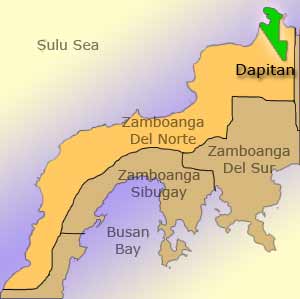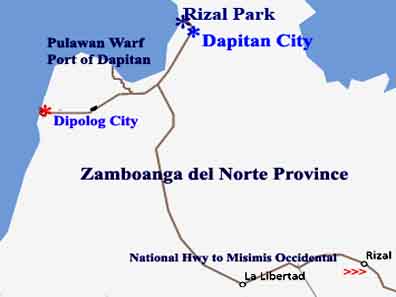
-
МјРЇСІИёСЖШИМі
-
 И№ОЫ КИОЫ Йъ ЗЛЦЎЧЯБт~ ИЎСЖЦЎ ПЙОрБюСі
И№ОЫ КИОЫ Йъ ЗЛЦЎЧЯБт~ ИЎСЖЦЎ ПЙОрБюСі 89,457
89,457 -
 [ЧЪИЎЧЩ ММКЮ] ФЋИ№ХзНК ПЉЧр 100Йш СёБтБт
[ЧЪИЎЧЩ ММКЮ] ФЋИ№ХзНК ПЉЧр 100Йш СёБтБт 48,901
48,901 -
 ИЖДвЖѓ НУГЛ - ИЎРп АјПјСЄКИ. (ЛчСј 16Рх ЦїЧд)
ИЖДвЖѓ НУГЛ - ИЎРп АјПјСЄКИ. (ЛчСј 16Рх ЦїЧд) 30,789
30,789 -
 ММКЮРЧ СіПЊСЄКИ15,529
ММКЮРЧ СіПЊСЄКИ15,529 -
 ИЖДвЖѓ БйБГ - ЕћАЁРЬЕћРЬ ПЉЧр СЄКИ14,341
ИЖДвЖѓ БйБГ - ЕћАЁРЬЕћРЬ ПЉЧр СЄКИ14,341 -
 [ЧЪИЎЧЩ ММКЮ/ИЗХК] ШЃХк МїЙк ПфБн Йз СЄКИ13,319
[ЧЪИЎЧЩ ММКЮ/ИЗХК] ШЃХк МїЙк ПфБн Йз СЄКИ13,319 -
 КИЖѓФЋРЬРЧ И№Еч И№НРРЛ КММі РжДТ ЛчСјУИ.13,132
КИЖѓФЋРЬРЧ И№Еч И№НРРЛ КММі РжДТ ЛчСјУИ.13,132 -
 ИЖДвЖѓ БйБГ - ЦХЛѓЧб ЦјЦї ПЉЧрСЄКИ12,831
ИЖДвЖѓ БйБГ - ЦХЛѓЧб ЦјЦї ПЉЧрСЄКИ12,831 -
 [ММКЮ-ЙшМБТјРх] МБЙкШИЛч РќШЙјШЃПЁПф~12,445
[ММКЮ-ЙшМБТјРх] МБЙкШИЛч РќШЙјШЃПЁПф~12,445 -
 ИЖДвЖѓ СіПЊ(ПЁИЃЙЬХИ -ИЛЖѓХз)РЧ СіЕЕ/ЧбБЙ РННФСЁ/МюЧЮИє12,112
ИЖДвЖѓ СіПЊ(ПЁИЃЙЬХИ -ИЛЖѓХз)РЧ СіЕЕ/ЧбБЙ РННФСЁ/МюЧЮИє12,112
DAPITAN PHILIPPINES

The City of Dapitan (Subanen: Gembagel G'benwa Dapitan/Bagbenwa Dapitan, Cebuano: Dakbayan sa Dapitan, Spanish/Chavacano: Ciudad de Dapitan) is a 6th class city in the province of Zamboanga del Norte, Philippines. According to the 2010 census, it has a population of 77,441 inhabitants. It is historically significant as being the place where the national hero, Jose Rizal was exiled by the Spaniards and is known as the "Shrine City in the Philippines." The city also boasts of Fantasyland, the first amusement park in the Visayas-Mindanao region. Dapitan is notoriously known as the principal base of the infamous Jalosjos political clan.Dapitan City caters to almost all kinds of tourists. Whether youтre looking for some outdoor fun, history, adventure, or relaxation, Dapitan has it all. If youтre visiting Dapitan City primarily to wade in the waters along Dakakтs white sand beach, then summer time is the best time to go. You may find more people in the area (than usual) during the summer season, but compared to other beach resorts like those in Visayas, the crowd is tolerable.
Another good time to go to Dapitan City is during the Kinabayo festival. The Kinabayo festival is a yearly event in Dapitan city which honors their patron saint, Saint James. Kinabayo is held annually every June 12 to July 25. The festival features street dances and parades. The activities during the festival are usually centered on the theme of the festival which is the battle of Covadonga. The battle of Covadonga is one of the Spanish-Moorish wars wherein it was believed that the Spanish won against even though all odds were against them with the help of Saint James.
Like in all Philippine festivals, the Kinabayo culminates with the locals going to churches for a special mass. Aside from Kinabayo, there are other festivals and events in Dapitan which are held every June and July. So if you prefer a Dapitan bustling with activities and shows, June and July are the best times of the year to go.

History
The beginnings of the settlement now known as the city of Dapitan predates the arrival of the Spanish conquistadores on the island of Mindanao. The Subanens, a nomadic tribe of Indo-Malayan stock, were the earliest known settlers who lived along river banks or "suba", from which word they received their present tribal identity as Subanen. However, it is believed that the timid Subanens were forced to move further into the hinterlands of the Zamboanga peninsula out of fear that pirates may seek shelter during foul weather in the natural harbors of Dapitanтs irregular coastlines. They are now mainly found in the mountainous areas of Zamboanga del Sur and Misamis Occidental.
Early cartographers of the Philippines showed Dapitanтs location in their maps of Mindanao using a variety of names by which they had known the settlement, such as тDapitoт in Kaeriusт map of 1598, тDapiteт in Dudleyтs map of 1646, тDapytoт in Sansonтs map of 1652, and тDapitanт in Mollтs map of the East Indies of 1729 and in Murillo Velardeтs map of 1734.
There are two versions of how Dapitan got its name. The first, from an account attributed to Fr. Urdaneta, infers that the name evolved from the original reference to it as "Daquepitan", which later became "Dacpitan" and finally "Dapitan" to make it easier to pronounce.
The second version, which is more widely accepted according to folklore, says that the name derives from the Cebuano word тDapitт, which means тto inviteт. Local tradition tells of the early settlers from Panglao in Bohol who were invited over by Datu Pagbuaya, the acknowledged founder of Dapitan, to join him in "Dakung Yuta", or literally the big land that is Mindanao. The invitation or pag-dapit that he extended to Boholanos is said to be how Dapitan got its name.
Various historical accounts also indicate that trading voyages and commercial relations existed with the nascent but thriving settlement of Dapitan. This interaction with traders from the different cultures in the region may have had some influence on the cultural evolution of Dapitan itself. The influence of the Spaniards, the Americans, the Japanese, and the different Visayan ethnolinguistic groups that settled here could not also be discounted in their contributions toward the evolution and emergence of a distinctly Dapitanon culture.

Dapitan, chartered city and port, western Mindanao, Philippines, situated on Dapitan Bay of the Sulu Sea. One of the principal cities located on the Zamboanga Peninsula, it lies 8 miles (12 km) northwest of Dipolog, the largest settlement of the region. José Rízal, the Filipino patriot whose writings inspired the nationalist movement, was exiled there from 1892 to 1896. The dwelling in which he stayed survives. Dapitanтs main industries are fishing (round scad, sardines, bonito, and anchovy) and agriculture. Copra is the most important commercial agricultural product. In recent years city planners have tried to capitalize on the areaтs picturesque location and lush vegetation in marketing Dapitan as a centre of ecotourism. Inc. city, 1963. Pop. (2000) 68,168.Six hundred fifty kilometers away from Metro Manila lays a once sleepy town called Dapitan. Dapitan used to be so rural that the only reason why youтd go there is to visit relatives. After all why would you travel hundreds of kilometers for a white sand beach resort or Jose Rizal memorabilia?
But Dapitan is more than Jose Rizal and Dakak. The newly opened Gloria de Dapitan is changing the face of Dapitan into a vibrant entertainment city. What once was a sleepy historic town with Dakak beach resort as its flagship tourist attraction is now fast becoming the premiere entertainment center of Mindanao.
Most people would probably be amused at the fact that practically all locals in Dapitan know Jose Rizal more than the average Filipino does. If you try asking a local (even small kids) about Jose Rizal, youтll find that you would be bombarded with interesting facts about the Philippinesт national hero aside from your question being answered. Regardless, if itтs just a side trip, one should definitely not miss going to the Rizal shrine in Dapitan. Inside the Rizal shrine complex is a replica of the three houses which Jose Rizal built (one of which is square wherein Jose Rizal, his mother, his sister and his nephew lived, another which is octagonal wherein Jose Rizalтs students lived, and a third one which is hexagonal that served as a chicken barn. One can also find Rizalтs relief map of Mindanao and Visayas, Rizalтs self designed water system, and numerous other memorabilia inside the shrine. Jose Rizalтs house, kitchen, and clinics are all replicas but memorabilia found inside the Rizaliana museum are all originals. Despite the revelation that Jose Rizalтs house in the shrine is just a replica, it does not take away from the fact that it once housed the greatest Malayan in history.
- ЁЄ
- ЁЄ
- ЁЄ
- ЁЄryWvMVxeet
- ЁЄryWvMVxeet
- ЁЄryWvMVxeet\'\"\\(
- ЁЄryWvMVxeetщ\'\"\\(
- ЁЄryWvMVxeet
- ЁЄryWvMVxeet
- ЁЄryWvMVxeet
- ЁЄryWvMVxeet
- ЁЄryWvMVxeet
- ЁЄryWvMVxeet
- ЁЄryWvMVxeet
- ЁЄryWvMVxeet















 ЧЪРкДхФФ ОпАЃЛѓДу ПРЧТ
ЧЪРкДхФФ ОпАЃЛѓДу ПРЧТ 12ГтПЌМг МвКёРкИИСЗ 1РЇ
12ГтПЌМг МвКёРкИИСЗ 1РЇ
 ГЛАд ИТДТ ОюЧаПј УЃБт
ГЛАд ИТДТ ОюЧаПј УЃБт
 ИЎОѓ ЧаБГ ЙцЙЎБт
ИЎОѓ ЧаБГ ЙцЙЎБт
 СжИЛПЁ ГЛАЁ ОЕ КёПыРК?
СжИЛПЁ ГЛАЁ ОЕ КёПыРК? УжАэАЁМККё РЬКЅЦЎ СёБтБт
УжАэАЁМККё РЬКЅЦЎ СёБтБт
 ЧіСіПЁМЕЕ ЧЪРкДхФФ!
ЧіСіПЁМЕЕ ЧЪРкДхФФ! ЧіСіПЁМ АЁДЩЧб
ЧіСіПЁМ АЁДЩЧб









 ЧЪРк ЦЏБо Ч§ХУ! ФСНУОюСі МКёНК
ЧЪРк ЦЏБо Ч§ХУ! ФСНУОюСі МКёНК
































